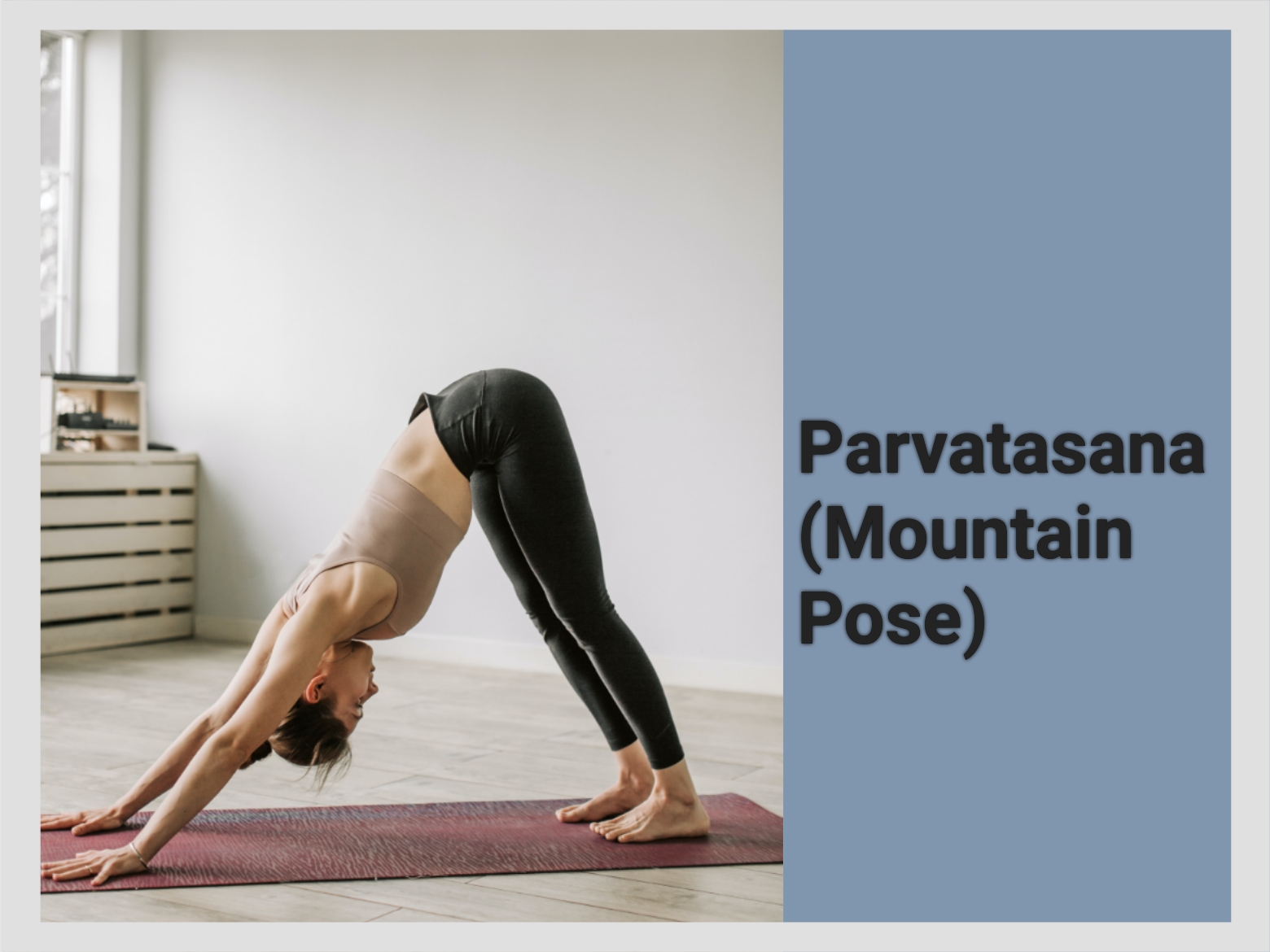Parvatasana (Mountain Pose)
Parvatasana is a Sanskrit language word. This word is mainly made by combining 2 words. The first word Parvat means mountain, while the second word Asana means posture, position or posture of sitting, lying down or standing in a particular situation.
The practice of this asana is very easy and it is also very beneficial for health. Parvatasana, also known as mountain pose, is an ancient yoga posture used to enhance physical and mental health. In this asana, a person sits and raises his hands above the head, which increases the height of his body and gives an opportunity to stretch the body parts.

Along with this, Parvatasana also helps in reducing mental stress and provides mental peace. This asana helps in strengthening the cells of the body and is also helpful in reducing sensitivity. Apart from this, this asana also provides strength to the back, shoulders and neck and helps in maintaining correct posture.
How to do parvatasana (Mountain Pose)
Performing Parvatasana in the early morning sunlight further enhances its benefits and can be an important step towards a healthier lifestyle.
♦ Spread a yoga mat in a clean and hygienic environment.
♦ Sit in Vajrasana and concentrate.
♦ Take a long deep breath and release it.
♦ Keep the claws of both the hands on the ground.
♦ Now take both your legs backwards and keep the claws on the ground.
♦ Keep in mind that while doing this, do not touch the part of your waist on the ground.
♦ Giving a triangular shape to your waist, keep the claws of both the hands and the claws of both the feet on the ground.
♦ While doing this asana, while pulling your waist upwards, keep the claws of both your hands on the ground and the claws of both your feet.
♦ Your body posture should appear in such a way that a mountain is standing.
♦ Now stop yourself in this position and practice long deep breathing.
♦ When you start feeling difficulty, come back to normal position.
Benefits of Parvatasana (Mountain Pose)
1. Promotes physical stability.
2. Provides strength to the muscles of the back, back, and waist.
3. Helps in making the spine long and shapely.
4. Improves heart health.
5. Promotes blood circulation in the head.
6. Helps in self-restraint and mental peace.
7. Helps in reducing belly fat.
8. Reduces the risk of heart diseases.
9. Improves nutrition and strengthens digestion.
10. The muscles of hands, shoulders, and neck etc. grow continuously.
11. Can help reduce stress.
12. Strengthens the trachea by improving the function of breathing.
What is the second name of Parvatasana?
The second name of Parvatasana is “Mountain Pose” or “Mountain Pose with Raised Arms.” It is called so because the pose resembles a mountain with the arms raised overhead, symbolizing the grandeur and strength of a mountain.
Precautions of Parvatasana (Mountain Pose)
Avoid practicing Parvatasana if you have the following problems.
(1) Do not do this asana if you have pain in the spine.
(2) This posture should not be done even in case of serious illness.
(3) Do not do this asana if you have diarrhea and asthma.
(4) Parvatasana should not be done when there is pain in the neck.
(5) Do not raise your hand when you have shoulder pain.
(6) If you have knee pain or arthritis, practice only with the support of the wall.
(7) Heart and high blood pressure patients should not do this asana.
(8) If you have poor control or low alertness, do the asanas slowly and increase the pause time between asanas.
Frequently Asked Questions
What is Parvatasana and it's benefits?
Parvatasana, also known as Mountain Pose or Raised Hands Pose, is a yoga asana that involves sitting in a cross-legged position and raising the arms overhead while keeping the spine straight. Its benefits include improving posture, strengthening the shoulders and arms, stretching the spine, and promoting mindfulness and focus. It is also helpful for calming the mind and reducing stress.
What muscles are used in Parvatasana?
Deltoids (shoulder muscles), Trapezius, Rhomboids, Serratus anterior, Biceps and triceps, Spinal erectors, Abdominal muscles, Gluteal muscles.
What is the duration of Parvatasana?
The duration of Parvatasana (Mountain Pose) can vary depending on your yoga practice, personal comfort, and the specific routine you are following. Typically, in a standard yoga class or sequence, you might hold Parvatasana for about 30 seconds to 1 minute.
Does Parvatasana help in asthma?
While Parvatasana (Mountain Pose) is a beneficial yoga pose with various advantages for the body, there is limited evidence to suggest that it directly helps with asthma. Yoga, in general, can be beneficial for managing asthma symptoms by promoting relaxation, improving lung function, and reducing stress, which can be triggers for asthma attacks.
Read Also
- Shalbhasana (Locust Pose)- Benefits & Steps
- Konasana- Benefits And How to Do It?
- Uttanpadasana (Rised leg Pose) Benefits & Steps
- Sarvangasana (Shoulder Stand Pose)- How to do it, Benefits & Precautions
- Prasarita padottanasana (Wide Legged Forward Bend Pose)